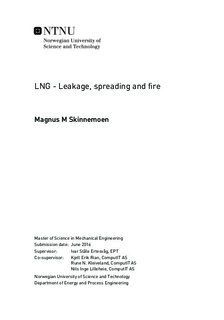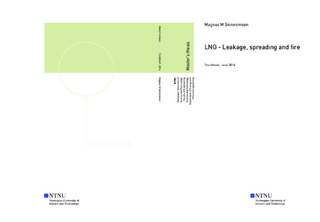| dc.description.abstract | This master s thesis continues the line of LNG related theses in cooperation with
ComputIT AS. The Phoenix series large-scale LNG pool fire experiments have been
simulated using the CFD software Kameleon FireEx (KFX) for validation purposes
of the software to experimental data.
A number of simulations were performed, and the main investigations of the
experiment thermal radiation, pool spreading and flame morphology have been
compared to results from KFX, using a range of different simulation scenarios. Scenarios
included simulating the LNG as either a liquid release or as a gaseous release
of methane from a circular equivalent of the quasi-steady LNG pool area obtained
on the experiment. Other variations included transient or constant release, where
the transient release was based on an approximated flow rate from the experiment,
and the constant release was based on the average flow rate over the duration of the
experiment. Due to limitations in the pool model in KFX, the liquid releases were
simulated on a flat ground instead of on a pool of water, with various heat transfer
coefficients to account for the heat transfer between the water and the LNG.
The radiative heat fluxes from the simulations compared to experimental values
were initially low by factors between two and four, regardless of simulation scenario.
The soot model was investigated, and found to give an excess of relatively cold
soot outside of the flame, acting as a radiation screen, thus reducing the thermal
radiation from the fire to the surroundings. The soot model was modified, and
subsequent simulations produced very comparable values for the radiative heat
fluxes for the majority of simulation scenarios.
For all liquid, transient simulations, the LNG pool spread much faster than
in the experiment, and only the simulations with adiabatic conditions between
the LNG and ground reached the same maximum area as the experiment. All
simulations with non-adiabatic conditions had a maximum pool area below that
of the experiment. As a result, it was concluded that the LNG vaporized too
quickly, and consequently the duration of the fire was about 250 s shorter in the
simulations than in the experiment. As a consequence of the high vaporization rate
in the simulations, the flame grew to heights far above the experiment, and at some
instances the flame in the simulations exceeded the flame height in the experiment
of over 100 m.
A new, simple model for LNG spreading through water was introduced, and
initial computations in MATLAB produced highly promising results. | |

